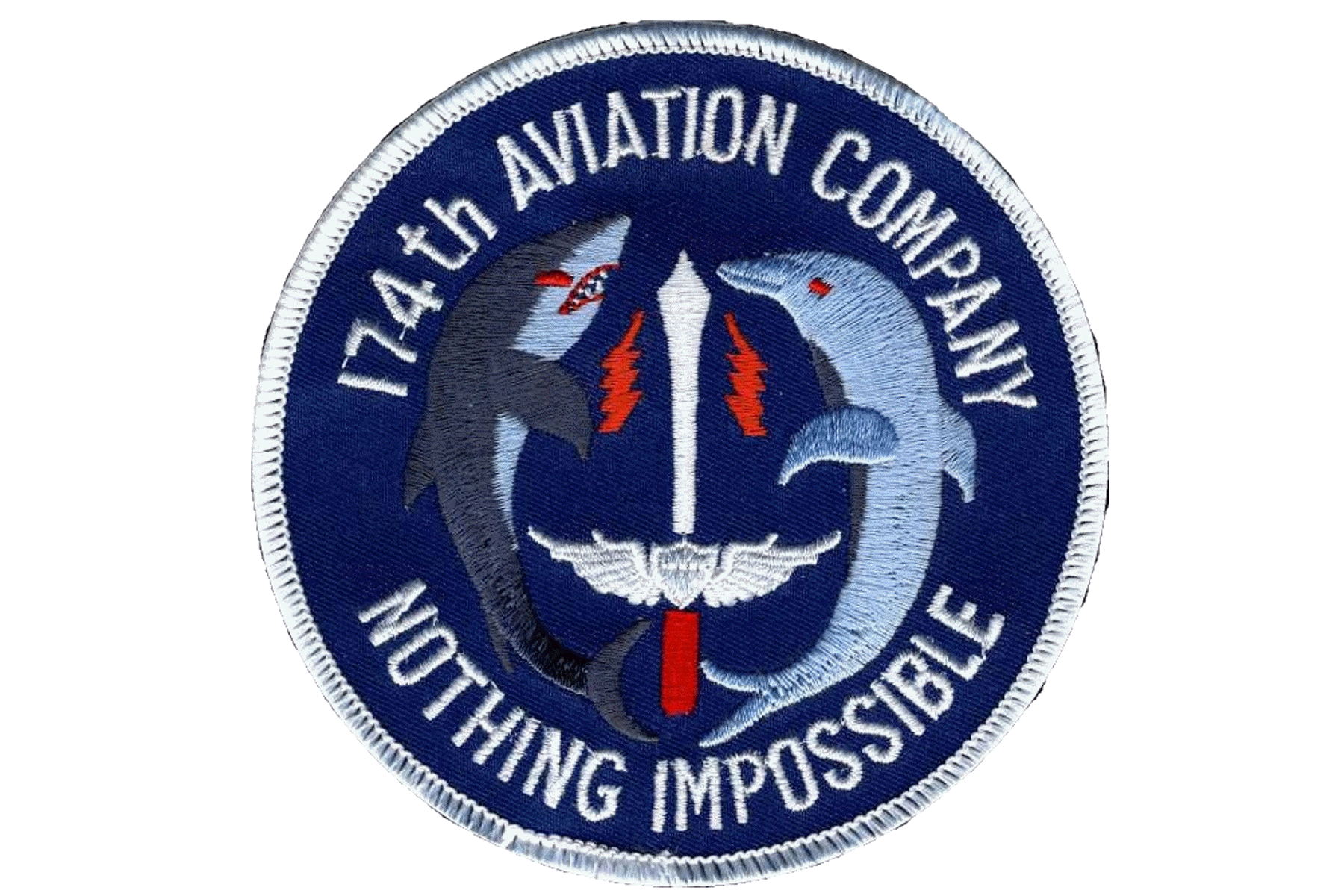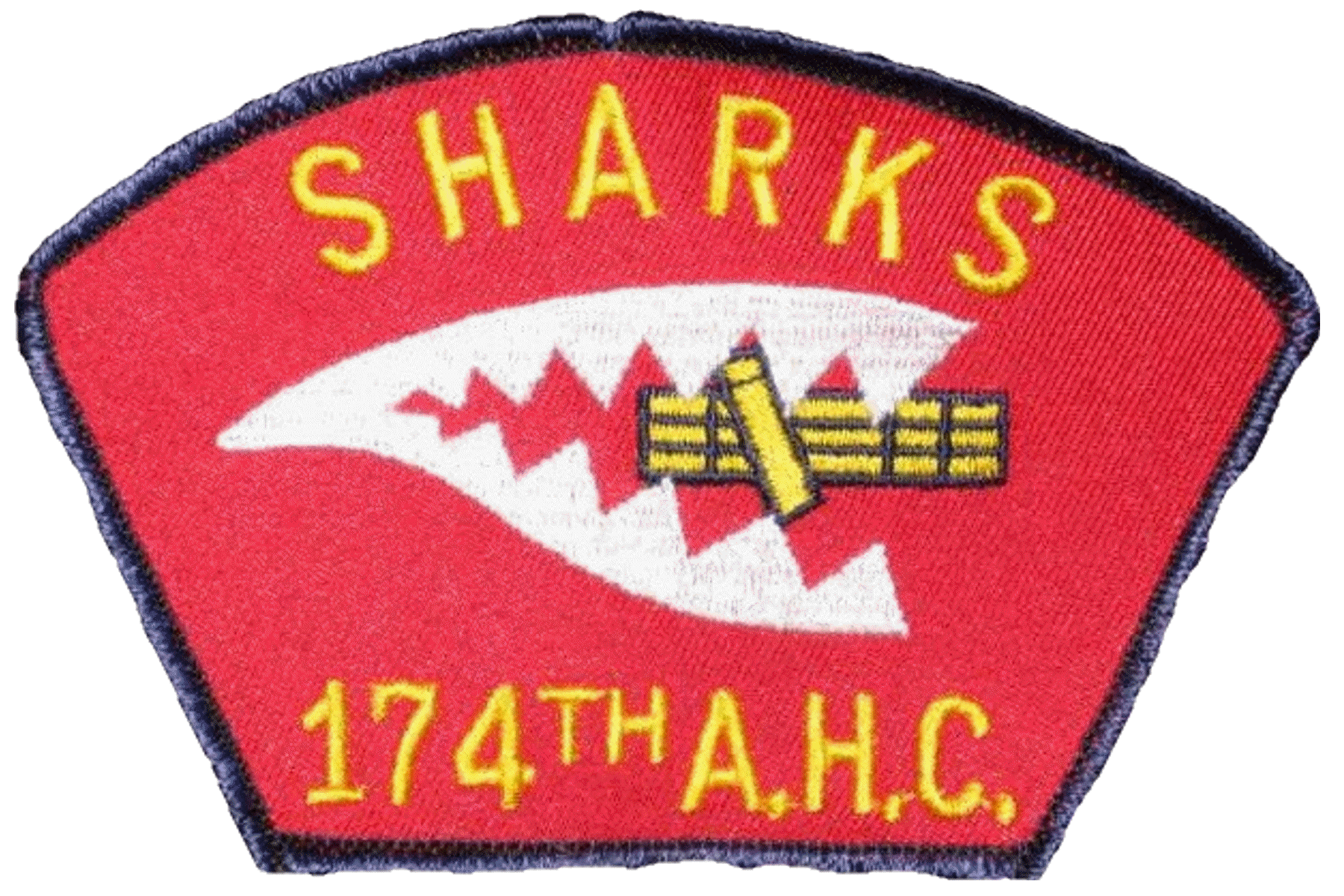JUST ANOTHER DAY
A Story by James Shedd
It’s 1969 and I’m in the U.S. Army, a SP4 crew chief, assigned to the second platoon of the 174th Assault Helicopter Company, Americal Division based in Due Pho, South Vietnam in support of the 11th Light Infantry Brigade.
I wake up much the same as I have done for a period of time now. My body and mind have become accustomed to early morning wake up calls. As if awakened by an alarm clock, my eyes open and my mind begins to function. All this happens a few seconds before our Platoon Sergeant, SFC Calhoun, enters our bunker-like barracks and begins walking on the wooden corridor which makes a distinct sound. As Sergeant Calhoun nears my room, I hear the SGT stop and knock on several doors and wake up Tom Bennett, William Loken, Gary Mack and Tom Taggart. To all he says: “Wake up, it’s 4:30, you have to be on your ship in an hour”.
SFC Calhoun continues his trek down the wooden corridor towards my door. As he comes closer the footsteps become louder and more distinct. Each day as I hear him approaching I think to myself: walk past my door – just once, please! I am so tired I could sleep all day if they would let me.
All of that wishing is in vain however, because last night I saw my name on the flight board. I’m scheduled to fly and what a schedule it is. I hear the sergeant stop at my door, for a split second I wish …but no, there’s the knock and he says “Shedd, wake up, it’s time”.
I stumble out of the bunk and I realize I have to be very quiet; my roommate Robert Shoe has a day off, his first one in weeks. In the darkness of our room, I search for my flight suit and boots. I am able to find the flight suit; the boots, however, are a different story. The first pair I try are large enough to fit the jolly green giant, at least from my point of view.
I finally locate my boots and after a short period of time I’m ready to begin the day’s activities. One of the first tasks to handle is that of waking up my gunner. SGT Calhoun leaves that unpleasant task to the crew chiefs. He is a strong believer in equality and as a result, distributes the hate as much as possible. Upon reaching my gunner’s room, I discover that he’s already gone. My gunner is a brand new guy. Today is his first mission and it’s safe to assume he didn’t get any sleep last night.
Finding my gunner has already left his room, I make my way to the mess hall. Breakfast, as usual, is so bad that I decide to skip it and instead have a cup of coffee which is just as bad as breakfast, but I’m accustomed to it. At this early hour of the day, the only souls awake are the cooks and the flight crew, two entities of the 174th that have nothing in common other than the preparation of food and consumption of food.
After downing that horrible but eye opening cup of coffee, I get to the ship, a UH-1H helicopter, on the flight line bunkers. A few minutes later the pilots arrive and we have completed a pre-flight check, finding that everything is OK. Then I look into the shadows behind the ship and I see six or seven figures walking towards the flight line bunker. Upon making visual contact, I think to myself “those guys must be LRRPs (Long Range Reconnaissance Patrol), at least I hope so or we are in deep trouble”. To my relief, we learn that they are the LRRP unit we are scheduled to ferry out that same morning. I tell them to stand approximately fifty feet in front of the bunker while the pilots start the helicopter and fly over to them. After directing the LRRPs to remain in place for a pickup, the pilots initiate start up procedures and in short order we pick up the LRRPs. Shortly thereafter, we are airborne making our way towards the mountains situated west of Duc Pho.
The LRRPs are a brave group of men who volunteer to enter enemy territory to observe, spy and gather intelligence on the North Vietnamese Army (NVA) regulars. Our first mission of the day calls for inserting the LRRP unit at a designated drop site. The real insertion is done after completing several prior and post false insertions. Inserting LRRPs is rarely problematic. Extracting them, however, is an entirely different situation. Anytime LRRPs units are discovered by NVA regulars, a firefight typically takes place which brings about the distinct possibility of LRRP members and the extraction helicopter coming under fire. After dropping the LRRPs off, we turn around and begin the flight back to base. On our way back to base, I feel very tired and fall asleep. Sleep is a precious commodity and even though it may come in short bursts it’s a welcomed relief that revives me.
Upon returning to base we prepare for the second mission of the day. With preparations complete, we are the last ship to line up on the runway for a combat assault, fifteen troop carrying ships, six gun ships (UH-1C) and one command and control helicopter. The infantry load up and we take off and fly towards the landing zone (LZ). For a brief moment I worry about the new gunner and I check with him – he’s doing o.k.
As we approach the LZ, we find that artillery units have prepared the area and the gun ships are firing their rockets and mini guns. As I scan the LZ and check on our sister ships, I can see the gunner in the gun ships changing the hot barrels of their M-60 machine guns. Then my gun jammed. For a brief but agonizing moment, the aircraft commander is concerned for my safety because he doesn’t hear the M-60 firing. As the moments wear on, he begins to repeat over the microphone: “Shedd are you hit? Are you OK? Why aren’t you firing?” I can’t answer because I’m reaching under my seat for my M-16. Upon grabbing the M-16, I continue to fire until we land and the troops disembark. We repeat the insertion of more troops, this time without having to shoot our way in, but our gun ships escorting us in.
After completing that mission we again turn around and head for base. We return to base and the first thing we do is refuel. While at the fuel depot, we receive orders to retrieve the LRRPs we inserted during the first mission of the day. While en route, we are advised that the LRRPs are in contact with an NVA unit and at least one member of the team is wounded. The knowledge that the team is under fire and a hot extraction is probable adds a great deal of tension and urgency to the mission. They are in trouble and we have to go in and get them out. When we arrive on station, we find that the gun ships of the 174th, The Sharks, are already there and it quickly becomes clear that the NVA does not want us to extract the team from this area. We go in and in what seems hours, but in reality are seconds, we extract the LRRPs. Not until I’m convinced that we are well out of harm’s way do I stop firing my M-60. One of the LRRPs is severely wounded. The other members of the unit are applying emergency
medical care as we make an emergency approach to the hospital. The LRRPs get off the ship and the pilots park it in a bunker. I send my gunner to get the water truck to wash off the blood from the LRRP member that is all over the cargo area of the helicopter.
It is now 2:30 p.m. and we haven’t had lunch so we head to the mess hall and eat whatever is available. We have 45 minutes to eat and return to the ship. Our lunch is cut short because the infantry unit we helped insert that morning is in a firefight and they need ammo, water and food resupply and extraction of their dead and wounded.
We enter another hot LZ and extract the dead and wounded. The stench of a burned human and the smell of blood are unforgettable. It’s a terrible mess. The dead are sometimes in plastic bags with name tags attached, and I don’t look at the names because I’m afraid I might recognize someone.
We drop off the dead and wounded at the hospital and return to the field with reinforcements, food, water and ammo. This scene is repeated throughout the day until nightfall when the firefight ends. Nightfall for some people, sometimes, can be a blessing and it was for me. We headed to base, refueled, put the ship in a bunker, washed the inside of blood, completed the post-flight check and prepared the ship for the next day.
I am really hungry and wonder if the mess hall has any food left over. I soon find out that there is
nothing left. So I head over to the hooch where we keep a small but important supply of c-rations
in our rooms for this type of occasion. I finally get to my room where I take off my flight suit, grab
a towel and a bar of soap and head for the shower. I’m lucky today; there’s still water in the tank.
I think I’ll stay until I’m a sponge. My body refreshed by the lengthy shower, I stroll over to my room,
eat, and lay down on my bunk. As I’m getting comfortable in my bunk the day’s events begin to
wash over my mind at which time I hear Robert Shoe say “Don’t worry Jim, it’s just another day!”
I agree. I can’ help it but I’m already thinking about tomorrow.
Below
are a series of Jim Shedd "Then" and "Now":
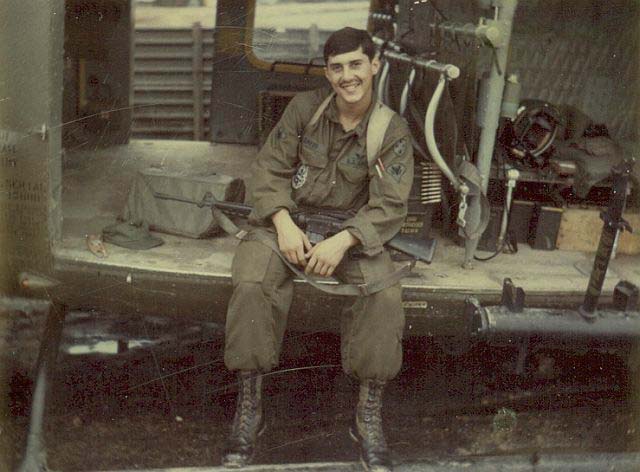 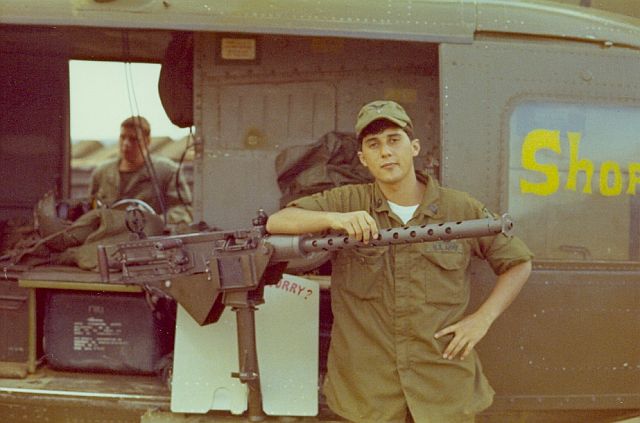
Above left: Me sitting in the cargo area of UH-1H 68-15680. Above right: Me -Door Gunner
for “Smokey” the smoke ship UH-1H 67-17503. Notice the door. The Crew Chief, SP4 Larry Whalen, was "short" at
that time. That’s a 50 cal attached to the ship. Whalen handled it, and I flew in the right side seat next to it on an M60. When he fired that “mother”, everything shook, including my brain. I am not kidding. We kept going over the ship after every flight, checking on rivets to see if any had popped off.
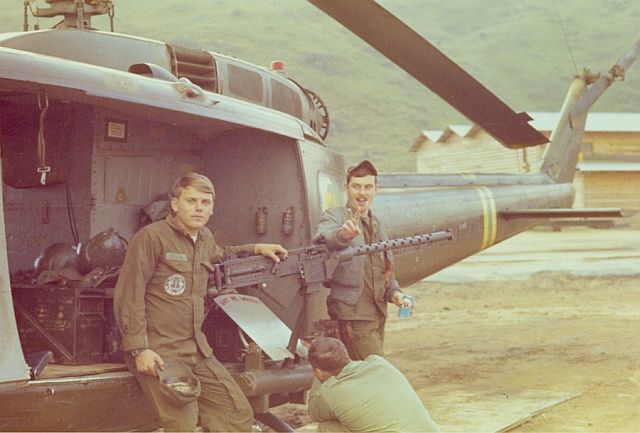 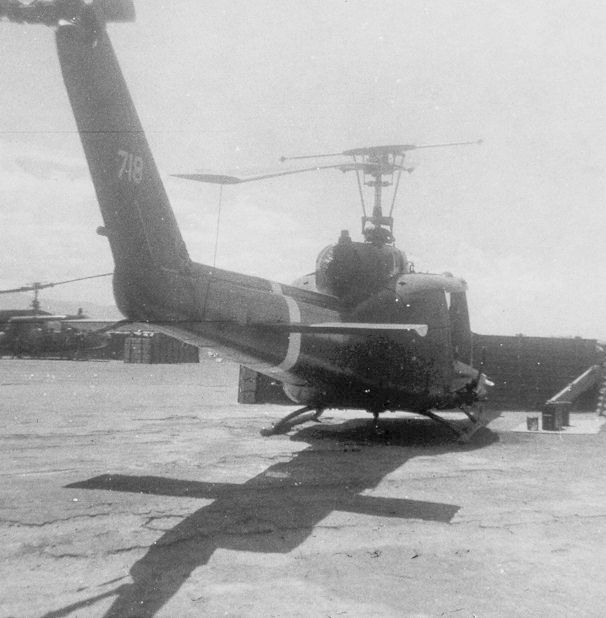
Above left: And that is Larry
Whalen and WO1 Wagner next to “Smokey”. Above right: I first crewed this bird UH-1H 67-17718. It was a real
“bleeder” (meaning a weak engine- RPM would "bleed" off). It couldn’t carry more than four infantry. I remember I was working on her when I saw brand
new #680 come in. I don’t think the blades had even stopped turning when I went straight to 2nd
Platoon SGT Calhoun and asked if I could have her. Yep.
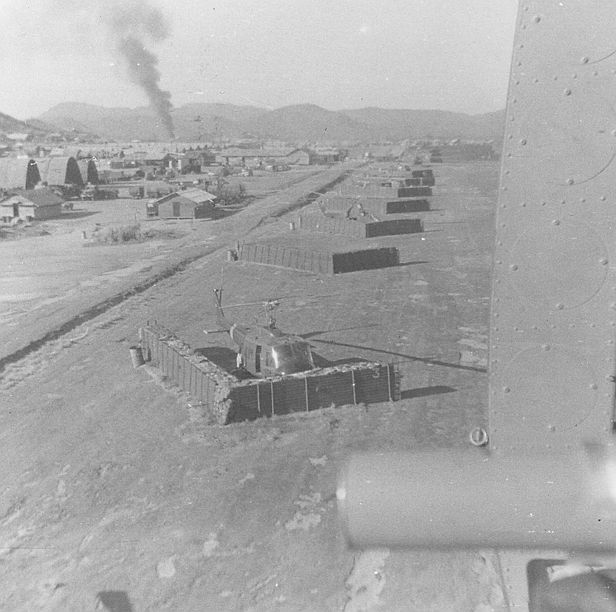
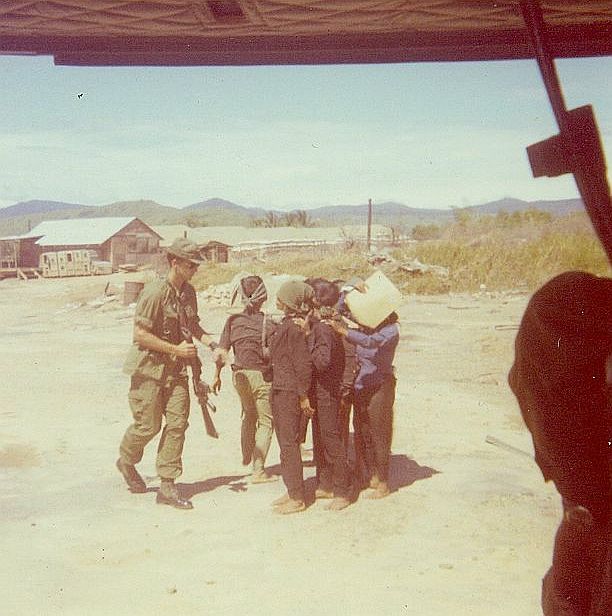
Above left: I remember that we were
flying C&C and a unit was in contact with the enemy just outside Duc Pho. That’s the Dolphin flight
line just below. Above right: Those hooded POW were being transported from the south side of the mountain (LZ Bronco, Duc Pho), where there was a small detention (perhaps also interrogation) center. We took them to Chu Lai.
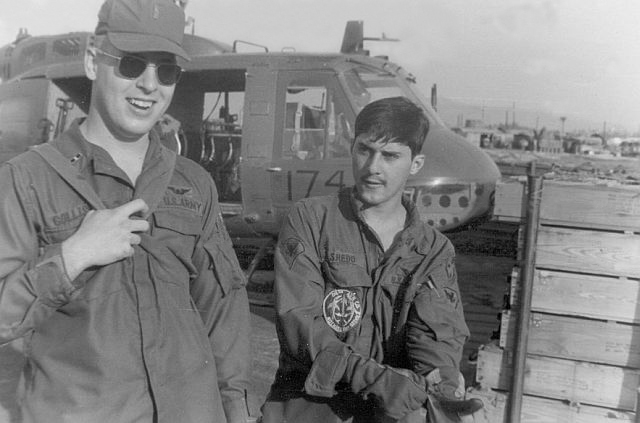
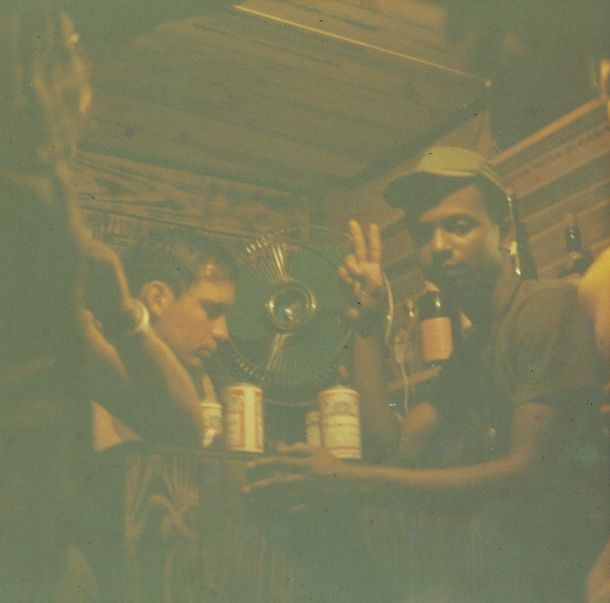
Above left: WO1 Gollis (one of my
Pilots sometimes) and me. Above right: This overly exposed (but very important) photo is of the bar in our room (Tom Taggart and mine) it was quite
a set up: a small bar with refrigerator, two fans, C-rats and LRRPs food, it was the center of social life in the 2nd Platoon. People would drop by, spend time, drink, tell war stories, laugh and overall
an excellent location for good camaraderie. That's Taggart second from left.
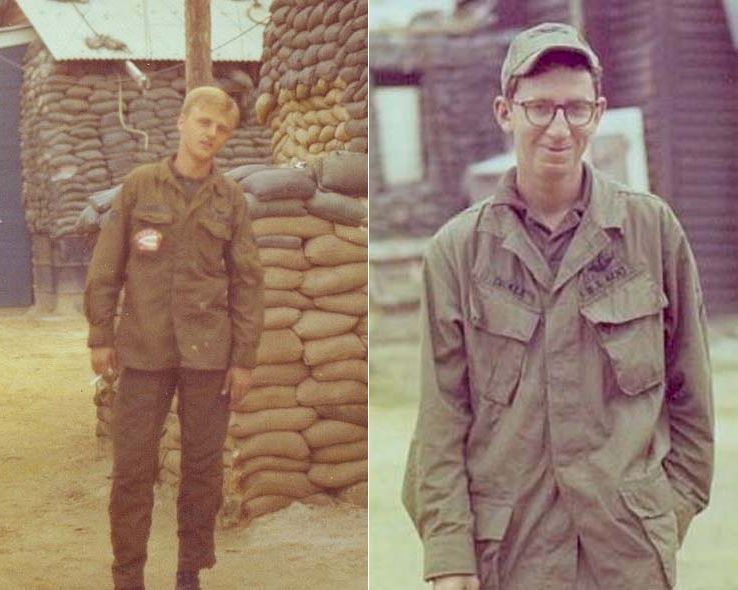
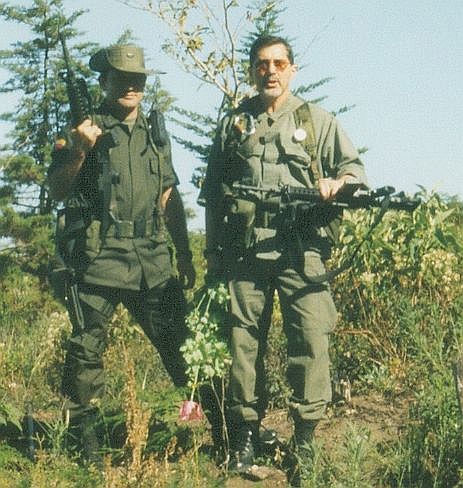
Above left: SP4 Bill Loken (Shark C/E at this time) left and SP4 Tucker (C/E of #022- the aircraft CPT
Gibbons was flying when he was KIA) right. Above right: These two “poppy field" photos (above right and left below) are on
Jan. 27, 1998. It was an eradication mission with the Colombian National Police Anti-Narcotics unit
in the mountains of NE Colombia-an area called Sierra de Perija. Myself and another DEA agent
went along on this mission. At the time, I was stationed in Bogota, Colombia. As
a Group Supervisor, I supervised all DEA Colombia jungle operations i.e.: cocaine
labs identification/destruction, poppy fields ID/eradication. In the above photo, to the left is a Major from the Colombian National Police. He was Commander of that AO.
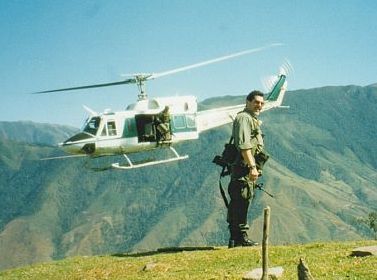
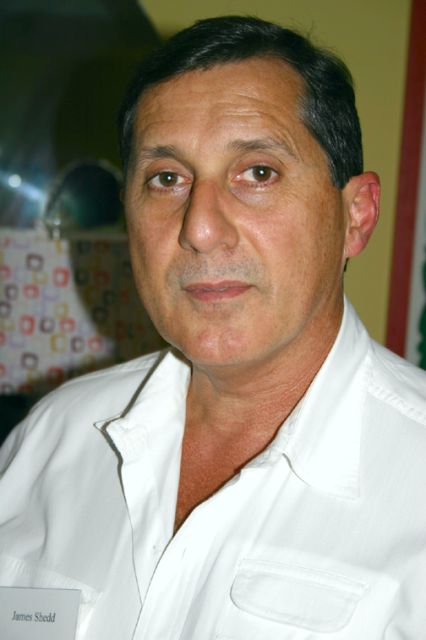
Above left: Waiting for lift out of Sierra
de Perija (Just can't stay away from UH-1s). Above right: Jim Shedd at the 2005 174th AHC
Annual Reunion.
|
